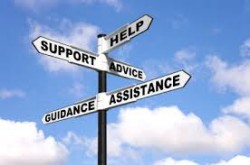Opiates are very addictive drugs. They derive from the opium poppy, and are thus among the world’s oldest known addictive substances. Because of this, they are somewhat well understood and there are several kinds of opiate addiction help available.
For help choosing between your addiction treatment options, call 800-442-6158 Who Answers? .
For many people, substitution medications such as methadone or Suboxone are helpful in helping to ease drug cravings, especially at first. Others benefit from therapy and counseling, others from support groups like Narcotics Anonymous, and many people stop using opiates with a combination of these things. It will take time, but recovery from opiate addiction is possible.
Opiate addiction can be very scary, and many people do not know where to turn when it starts to affect their lives. This resource is intended to help by providing:
- Information about opiates and opioids
- Information about opiate addiction and how to recognize it
- Information about seeking help for opiate addiction and what kind of help is available
- Information and tips for helping a loved one who is addicted to opiates
- Information and coping methods for friends and family of opiate-addicted people
What are Opiates and Opioids?

You can find the opiate addiction help you need today. Many resources are available to you.
Understanding opiate addiction and help for opiate addiction first takes an understanding of opiates. Opiates, and their synthetic counterparts called opioids (which have very similar effects), are derived from the seeds of the opium poppy. Their most common use is in pain relief, though some are prescribed to reduce anxiety, and in sufficiently high doses they produce euphoria. Some opiates, such as heroin, are illegal, and all others are only legal when prescribed.
According to the National Institute on Drug Abuse, in 2010 an estimated 12 to 21 million people worldwide were abusing opioids. That year, 1.9 million people in the U.S. were addicted to prescription opioid pain relievers and 359,000 people were addicted to heroin.
Here is a list of opiate and opioid drugs:
- Opium
- Heroin
- Morphine
- Codeine
- Hydrocodone (Vicodin)
- Oxycodone (Percodan and OxyContin)
- Hydromorphone (Dilaudid)
Most of these, especially the prescription opiates, are taken by mouth. Those are also sometimes snorted when taken with the intention of getting high. The others are either snorted, taken intravenously, or smoked.
On Opiate Tolerance, Dependence, and Addiction
Opiate addiction can develop whether someone is taking legal or illegal opiates, and can even happen if someone is taking prescription opiates as prescribed. According to the Journal of Science and Practice Perspectives, opiate tolerance, dependence, and addiction are all manifestations of brain changes that result from chronic opiate use. Addiction usually starts with a person developing a tolerance to or dependence on opiates.
- Opiate tolerance refers to the need to take more of a substance to feel the same effect previously experienced with less. For example, someone on pain medications may not feel pain relief from their recommended dosage as tolerance develops. That person may then decide to take more, let’s say one and a half pills instead of two, which may increase their risk of addiction.
- Opiate or opioid dependence refers to the body’s reliance on an opiate drug. The body can get used to having opiates, and then will crave them in their absence. Someone who develops an opioid dependence will feel withdrawal symptoms, which can be flulike symptoms, anxiety, nausea and more, when they do not have them, according to Medline Plus.
These conditions – tolerance and dependence – are a result of brain changes caused by the drugs. They are reversible changes, though, and the brain is able to recover from them. When a person passes over into opiate addiction, however, things get much more complex.
- Opiate addiction: Essentially, opiates affect the brain’s reward system and train it to desire more of the drugs. It craves the pleasure created by excess dopamine that opiate use results in, and promotes continued use. With dependence, a person will continue using opiates every day to ward off withdrawal symptoms. Further prolonged use as such will inevitably lead to more long-lasting changes in the brain. These changes are what very likely underlie the compulsive drug-seeking behavior and other things that are characteristic of addiction.
- Once addiction sets in like this it becomes more difficult for people to stop, and they now have a chronic condition. Drug addiction is a chronic, relapsing condition, but many people are able to achieve and maintain recovery in their lives through finding opiate addiction help.
Signs of Opiate Addiction
Opiate addiction is characterized by compulsive drug-seeking behavior and taking of opiates without regard for the consequences, despite the consequences being known. If you suspect someone you love is using opiates, and may be addicted, it is helpful first to know the signs of opiate use.
According to the US Department of Interior, someone who is under the influence of opiates may exhibit the following symptoms:
- Constricted pupils
- Sweating
- Nausea and vomiting
- Diarrhea
- Loss of appetite
- Slurred speech
- Slowed reflexes
- Drowsiness and fatigue
- Mood swings
- Impaired coordination
- Depression
- Apathy
- Stupor
- Euphoria
Once a person becomes addicted, they may act like this more often than not. Sometimes, however, the addiction becomes such that others do not notice, as the person is under the influence of opiates too often.
Other signs of opiate addiction may include:
- Wearing long sleeves often to cover up track marks/existence of track marks
- Finding paraphernalia such as needles, crushed up pill residue, etc.
- Rapid mood swings
- Displaying symptoms of withdrawal or sickness when opiates are unavailable, haven’t been taken in a few hours
- Loss of interest in activities that were previously considered enjoyable
- Change in group of friends
- Poor performance at work or in school
- Compulsive drug-seeking behavior
- Engaging in stealing and other behaviors to obtain drugs, money for drugs
- Borrowing money with no explanation of why, not returning it
- Lack of care about appearance and hygiene
- Change of weight
- Sleeping often, more than usual
What is Opiate Withdrawal Syndrome?
In order to fully understand opiate addiction and getting help for opiate addiction you must understand withdrawal and know what to expect. Opiate withdrawal is the body’s response to no longer having opiates. As discussed with dependence, the body becomes very accustomed to opiates after exposure for some time, and actually begins to desire and expect them. Withdrawal happens when you abruptly stop using opiates after heavy prolonged use.
According to the US National Library of Medicine, withdrawal symptoms from opiates are not fatal, though they are very uncomfortable. They are part of the reason that people have such trouble quitting opiates, as they simply cannot stand the feeling of ‘dope-sickness’. There are both physical and psychological symptoms of withdrawal.
Psychological opiate withdrawal symptoms include:
- Agitation
- Anxiety
- Insomnia
- Restlessness
- Cravings
Physical symptoms of opiate withdrawal include:
- Muscle aches
- Excessive tearing
- Runny nose
- Sweating
- Yawning
- Abdominal cramping
- Diarrhea
- Nausea
- Vomiting
The worst of the withdrawal symptoms usually subside within a week, though the psychological symptoms may persist for a few months to some degree. Medication can sometimes help with withdrawal, and some people take Pepto Bismol or some equivalent for the nausea and related symptoms. Opiate replacement therapies can help as well, which is discussed later on in this page.
Experiencing opiate withdrawal is also a sign of opiate addiction.
When it’s Time to Seek Help
Ask yourself these questions:
- Do I need to take more opiates than previously to feel the same effect?
- Do I feel sick or anxious when I do not have opiates?
- Have I borrowed or stolen money to get opiates?
- Has my job or work performance decreased since I started using opiates?
- Have my relationships suffered because of opiates?
- Have I tried to stop using opiates on my own but been unsuccessful?
If any of your answers were ‘yes’, you should seek help for opiate addiction.
Opiate abuse and addiction is dangerous for many reasons. Possibly the most apparent is that overdosing on opiates is always a possibility, and overdose very often leads to death. This does not always happen in addicted people, and overdose can happen to anyone who is abusing opiates.
Intravenous opiate use (shooting up) contributes to the spread of deadly diseases like HIV and hepatitis C, according to the National Institute on Drug Abuse. Opiates can harm your heart and other organs, and contribute to a generally unhealthy lifestyle.
So, when is it time to seek opiate abuse and addiction help?
The time could be right now. If you or someone you love is abusing opiates they are putting themselves at risk for many problems. Abuse of illegal opiates is especially dangerous, as you really don’t know what is in the drugs you’re getting on the streets, and they are not approved for any medical use. When taken wrongly, legal prescription opiates are no better.
If you are taking prescribed opiates and are developing a tolerance to them – talk to your doctor. Do not decide that now you should take more than your prescribe dosage, that is opiate misuse and is dangerous. If you are feeling dependent on opiates and feel sick without them – talk to your doctor. This is not yet addiction, but could develop into one very easily. If you don’t deal with it now you will end up addicted to opiates, and you will have a lifelong problem.
If you or someone you love is already suffering from opiate addiction, there is no better time than right now to get help. Medication therapy, counseling, support groups, family therapy and more are available to help you stop using opiates right now. Recovery is possible, but you have to work for it.
What Kind of Help is Available for Opiate Addiction?
Opiate addiction help comes in a few different forms. Treatment centers provide counseling, medication, and more. Methadone clinics provide methadone-maintenance treatment and some also offer counseling, and support groups offer just that – support – which is indispensable in recovery.
Treatment Centers for Opiate Addiction
Many people find it helpful to enroll in a treatment program for opiate addiction. Treatment programs are specialized centers staffed by medical and treatment professionals such as doctors and therapists. They usually involve some type of medication therapy, counseling, and group meetings. Some treatment centers also offer skills training and employment integration.
There are two main types of opiate addiction treatment centers: inpatient, or residential, and outpatient.
Things to consider when choosing an opiate addiction rehab:
- Finances
- Location
- Job and family situation
- Severity of addiction/addictive tendencies
- Whether you have been in treatment before and were unsuccessful at maintaining sobriety
Inpatient Opiate Addiction Rehab: Inpatient centers, also called residential, are treatment centers that people actually live in for the duration of their treatment. Inpatient programs provide a safe and temptation-free environment for people to work on their recovery in. They offer the possibility to have care and support 24 hours a day, daily meetings, counseling, drug screening, and can offer medication as well.
Inpatient rehab centers are, however, typically more expensive. They require a bigger commitment, as in inpatient rehab you may have to leave a current job or school program. This can be good for some people, though, as one’s environment is often a factor in their addiction. It is also helpful for someone working on recovery to meet and get to know others in their situation. At inpatient treatment people are surrounded by others like them, and can learn from and support each other throughout their experience.
Outpatient Treatment for Opiate Addiction: Outpatient treatment centers provide more flexibility, and are generally less financially costly. With outpatient treatment, patients find their own accommodation, which is often their home or the home of a relative, and go to the treatment center at appointed times. These ties vary depending on the program, and could be anywhere from once a week to every day. Outpatient treatment centers usually also offer therapy, drug screening, medication, and group meetings.
One problem with outpatient treatment is that patients are often still in the same environment as they used drugs in, and are prone to temptations and negative influences. That said, they do offer flexibility for people who are unable to completely move into a treatment facility for the duration of treatment.
Methods of Treatment for Opiate Addiction
Step One: Opiate Detox
Getting help for opiate addiction in a treatment center – and on your own for that matter – will start will a detoxification process. In order to rid the opiates of the body and begin meaningful, habit-changing treatment patients first must go through about one week of detox. During this stage patients are likely to experience withdrawal symptoms. These withdrawal symptoms vary greatly in how they are experienced, but some can be very uncomfortable. Treatment centers can ensure that you are safe and as comfortable as possible during detox. At this time they may offer medication therapies to ease the opiate detox symptoms.
The worst of the physical symptoms of opiate withdrawal normally will subside within about a week, at which time counseling and other treatments can begin.
Counseling for Opiate Addiction Recovery
Opiate addiction help usually involves some kind of therapy, and therapy is widely regarded as an important part of treatment. This condition is more than just a dependence on opioids. Opioid addiction involves behaviors, environments, and a variety of other psychological and social factors, factors which are mediated with counseling. Counseling and therapy are often used in conjunction with medication, and counseling is usually postponed until patients have fully detoxed.
These are different kinds of therapy that help with opiate addiction:
- Cognitive-Behavioral Therapy (CBT): CBT is one of the main therapeutic methods used to treat opiate addiction. Using this method, opiate addiction is looked at as the effect of learned associations and patterns of reward and punishment. Therapists help patients recognize ‘triggers’ that lead them to use, such as certain moods, situations, people, and emotions. CBT works to help people change their response to these triggers to avoid substance abuse.
- Contingency Management: Contingency management is a newer technique that uses a system of rewards to help encourage positive behavior. Patients are motivated to stay clean by being promised coupons, vouchers, and points that they can redeem for constructive purposes. Some may include movie theatre tickets, free car washes, or dinner at a restaurant. They are usually rewarded on the basis of drug-free urine samples.
- Group Therapy: These methods of therapy and others may also be used in a group setting. Group therapy helps recovering opiate addicts make connections with others in similar situations so that they can all heal together. Group therapy often happens in the environment of a support group, as well. These are discussed at greater length below.
- Family Therapy: It is very important and helpful to incorporate a patient’s family in treatment whenever possible. Family therapy usually includes sessions with the addict’s family and the main counselor as well as with everyone together. The family can help encourage the patient, can fully understand the treatment process, and can help motivate a person’s recovery.
- One important thing regarding counseling and opiate addiction help is that, according to Harvard Health Publications and other sources, psychotherapy is never recommended as primary treatment. It has not had a good rate of success with opiate addicts as they are reluctant to participate, and because addiction is not best treated when viewed as a symptom of an emotional problem.
Medications Used in Opiate Addiction Treatment
Medications are usually part of the first line of treatment for opiate addiction. We know that opioids can change the way the brain works, and we know a good amount about how they do it. Medication therapy works to address these brain changes and to prevent them from leading to drug abuse. They are often part of the detoxification process, and are then incorporated into an ongoing treatment plan.
According to the National Institute on Drug Abuse, opiate replacement medications work through the same receptors as other opiates, but are safer and less likely to produce addictive behaviors. There are three types of opiate addiction medications that work in different ways. Agonists activate opioid receptors, partial agonists also activate the receptors but with a diminished response, and antagonists block the receptor, effectively interfering with the reward response to opiates.
These medications are called medication-replacement therapies. The main ones are:
- Methadone: Methadone is the oldest medication replacement therapy, and it has been used since the 1960s. It is an opiate agonist. According to the Centers for Disease Control and Prevention, methadone blocks the euphoric and sedating effects of opiates, relieves cravings, relieves symptoms of withdrawal, and does not cause euphoria or intoxication itself. Methadone is taken orally once a day. It is only available through specialized methadone clinics, which are found in many places across the US.
- Buprenorphine: Buprenorphine is a partial opioid agonist. Buprenorphine blocks the effects of heroin and other opiates, mitigates withdrawal symptoms, and reduces drug cravings. It can be prescribed by a doctor and thus can be easier to obtain than methadone. Buprenorphine has very minimal side effects and does not have an overdose potential.
- Suboxone: Suboxone is a mixture of buprenorphine and naloxone. The naloxone in the mixture helps to prevent overdose, and is actually an antidote to overdose. If someone takes other opiates while on Suboxone, they will experience negative symptoms. Suboxone can be prescribed by physicians as well, and the medication is administered as a sub-lingual dissolving tablet.
- Vivitrol: Vivitrol is one of the newest opiate replacement therapies. According to NIDA, it is a long-acting formulation of naltrexone which is given as a monthly injection. It may be helpful for improving compliance, as it does not need to be taken daily. It should be used only after a person has undergone detoxification, while the other medications are often administered during detox as well as after.
These medications help to reduce the risk of overdose, the incidences of relapse, and reduce the risk of transmitting diseases such as HIV, hepatitis B or C, tuberculosis, and other STDs. They also result in a reduction in criminal activity. A truly comprehensive opiate addiction help and treatment plan incorporates both medications and counseling. Medication therapies are typically continued for at least 12 months, and patients may choose to taper their doses and eventually stop taking them altogether.
Getting Help for Opiate Addiction at Support Groups
Support groups are an instrumental part of opiate addiction help. Perhaps the most well-known support groups are Narcotics Anonymous and Alcoholics Anonymous. These groups follow a model called the ‘12 Steps’, which involves admitting that you are helpless over your addiction, and giving yourself up to a higher power. By ‘working the steps’ people reconcile with their drug abusing pasts, forgive themselves and others, and ask their higher power to help them recover. People often enlist the help of a sponsor, who is someone who is also a part of one of these groups and who has worked the steps.
There are non-spiritual support groups and other support groups that do not follow the 12 step model, too. SMART Recovery is one such group, and this organization focuses on self-empowering recovery as well as science-based principles. There are online support groups as well as other smaller support groups that can help you recover from opioid addiction.
Support groups can be a very great help in overcoming opiate addiction. They allow you to help yourself while helping others. In this way, you can share your experiences and feel comforted by hearing those of others. You can learn what helps other people in their recovery and share what works for you. You make new connections and meet a whole network of new, drug-free people who share an important part of their past with you. As well, working within a structured recovery program can help you retain the tools you need to maintain recovery and stay opiate-free.
Help for Families of Addicts
Being the family member or loved one of someone who is addicted to heroin, painkillers, and other opiates is very hard. The nature of addiction is such that people are prone to lying, stealing, and becoming almost unrecognizable from the people they had been to you. It is important to remember that you are not alone. There are many lives that have been touched by the disease of addiction, and there are resources for you as well.
Two main sources of help are Nar-Anon and Al-Anon family groups. These groups are support groups, much like their counterparts for addicts, but are intended only for the loved ones of addicts. Here you can share your stories, your worries and fears, and can learn those of others. You can discuss what is working for your loved one and where they are challenged, and maybe get some help from your fellow group members. It is a great environment for support, and can truly help you along the way.
Another thing to consider is getting therapy for yourself. Talking to an addiction specialist or other therapist about your situation and where you stand can greatly help you cope, and you can learn about different ways you can or may not be able to help your loved one.
Tips for Finding Help for Opiate Addiction
If you or someone you love is struggling with an addiction to heroin, oxycodone, OxyContin, hydrocodone, morphine, opium, or any other opiate you should find help as soon as possible. The longer you wait the greater chance the drugs have of truly damaging your life and the lives of those around you.
These steps will aid you in finding help for opiate addiction:
- Commit to getting help. To get help for someone a commitment has to be made. Ideally this commitment would be made by the person in need of help, but sometimes that can be hard to get. If you are committing to helping someone else get treatment, you may hold an intervention, or try other ways to get them to come around. If you are the person in need of treatment, you have to make a conscious commitment to get help and to stop using opiates.
- Stage an intervention. If your loved one is in need of treatment but is reluctant to go, holding an intervention can help. You may want to bring together loved ones of the addict to make an intervention plan. Another great help could be to hire an interventionist.
- Research your options; assess what kind of treatment could be right for you. Seeing as there are different treatment options for opiate addiction, you will want to assess what is right for you. Do you need to be close to home or far away, how much money do you have to spend on treatment, and will your insurance be able to help out are all questions to ask yourself. At this stage it can help to talk to treatment professionals to get their opinion. You can call our helpline at any time: 800-442-6158 Who Answers? .
- Contact treatment facilities and make appointments. At this point you will have to find out if the treatment facilities you are interested in have space for you, and are able to take you. Again, by calling our helpline 800-442-6158 Who Answers? we can help you find an opiate rehab center today.
- Follow through with treatment. Immersing yourself into the treatment environment, truly opening up in therapy, and being open to the things you learn while in rehab will greatly help you recover.
Qualities of the Best Opiate Rehab Centers
With the time, money, and effort put in to rehab and the sensitivity of the situation, you want to be sure you get something out of it. There are a few things to look out for in a good opiate rehab center. This is a basic list:
- Make sure the program is accredited and licensed.
- Be sure the treatment center is staffed by trained addiction treatment professionals.
- Find out what the methods of treatment are that will be available to you, and make sure they are comprehensive.
- Try to find out about the effectiveness of the program, they may have some statistics about success rates.
- Learn about the aftercare program. Do they run an aftercare program? Will they help you find support groups and/or transitional living after treatment? What is the discharge process like?
- Ensure that treatment specialists, such as counselors and doctors, will be available to you often.
For more information about opiate addiction help, or to find treatment near you, call us at 800-442-6158 Who Answers? .











